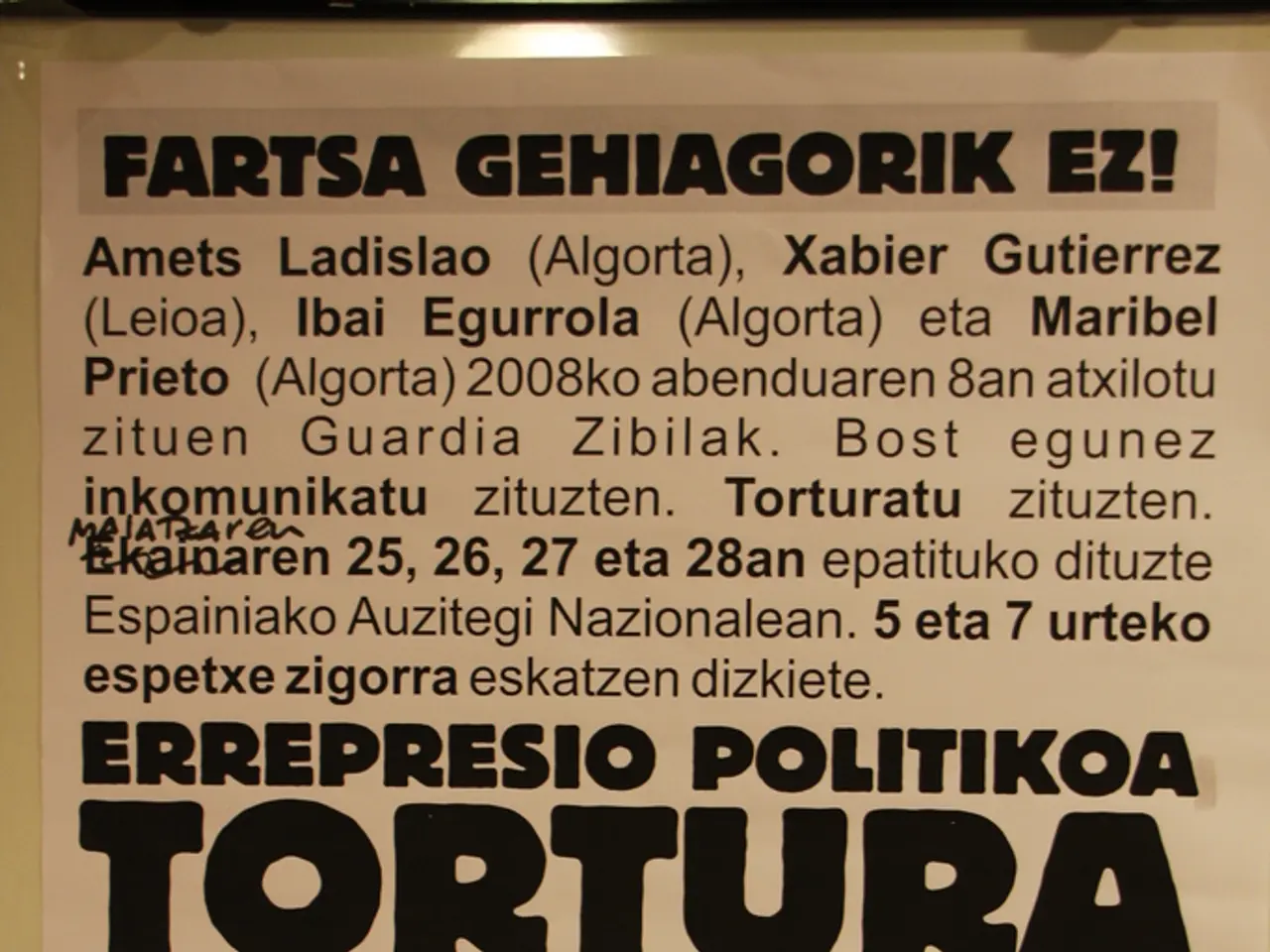Central Bank Stays Rate Steady Amidst Economic Doubt; Trump Criticizes Decision
In the midst of mounting pressure from President Donald Trump, the Federal Reserve held its benchmark interest rate steady at 4.25% to 4.5%. This decision, announced on June 2025, was largely in line with expectations and marked the Fed's first rate hold since December.
Undeterred by Trump's calls for a rate cut, the Federal Reserve weighed signs of a weakening economy. Retail sales numbers fell more than expected, as reported by the US Department of Commerce, and jobless claims reached their highest level in eight months, according to the US Department of Labor. However, the latest jobs report showed the unemployment rate remained steady at 4.2%, suggesting a relatively stable labor market.
Fed Chair Jerome Powell explained that the labor market was not a significant source of inflationary pressures, and the central bank opted to hold rates steady in response to economic uncertainty stemming from Trump's policies, as well as consumer prices, a key inflation gauge for the Federal Reserve.
Economists agreed that while the Fed faced pressure to lower rates, the US economy was proving more resilient than expected. The current consensus growth forecast for the US in 2025 is down to just 1.4%, implying the lowest nominal growth rate since 2020. This reinforces the Fed's "wait-and-see" approach.
The Fed's stance revealed concern about inflationary pressures that may be partly driven by tariffs introduced during Trump's administration. Despite signs of slowing economic growth and some weakening in the labor market, inflation, as measured by the Personal Consumption Expenditures Price Index, is forecast to rise to 3% in 2025, complicating the Fed's policy decisions.
President Trump criticized the Federal Reserve's decision to hold rates steady, expressing his desire for rate cuts. However, the Fed's commitment to its dual mandate of price stability and maximum employment remains steadfast, even in the face of political pressure.
As policymakers look ahead, they consider the looming and shifting changes to Trump's tariff policies, as well as the escalating tensions in the Middle East. Concerns about oil prices increasing, driven by the potential closure of the Strait of Hormuz, have fueled uncertainty.
In response to Trump's public attacks, Fed Chair Jerome Powell stated, "Everything we do is in service to our public mission."
While the Fed resists calls for rate cuts, borrowing costs for consumers and businesses will remain relatively high.
[1] Constance L. Hickman, "The Federal Reserve's Price Stability Mandate: Why It Matters for Monetary Policy," Duke Law Journal Online, (2020).
[2] Chad M. Bown, "Donald Trump's Tariffs Aren't Working," Foreign Affairs, (2019).
[3] "Federal Reserve Monetary Policy - June 2025 FOMC Statement," Board of Governors of the Federal Reserve System, (2025).
[4] "Economic projections of Federal Reserve Board members and Federal Reserve Bank presidents," Board of Governors of the Federal Reserve System, (2025).
- Despite the political pressure from President Donald Trump for a rate cut, the Federal Reserve's commitment to its dual mandate of price stability and maximum employment remains steadfast, as evidenced in its holding of interest rates steady in response to economic uncertainty stemming from Trump's policies.
- The escalating tensions in the Middle East, fueled by concerns about potential closure of the Strait of Hormuz, and the looming and shifting changes to Trump's tariff policies present a complex backdrop for the Fed's monetary policy decisions, affecting both inflation and business activities.
- The increase in inflation, as measured by the Personal Consumption Expenditures Price Index, to 3% in 2025 complicates the Fed's policy decisions, while the lowest nominal growth rate since 2020 reinforces the "wait-and-see" approach in the midst of war and political uncertainty.




